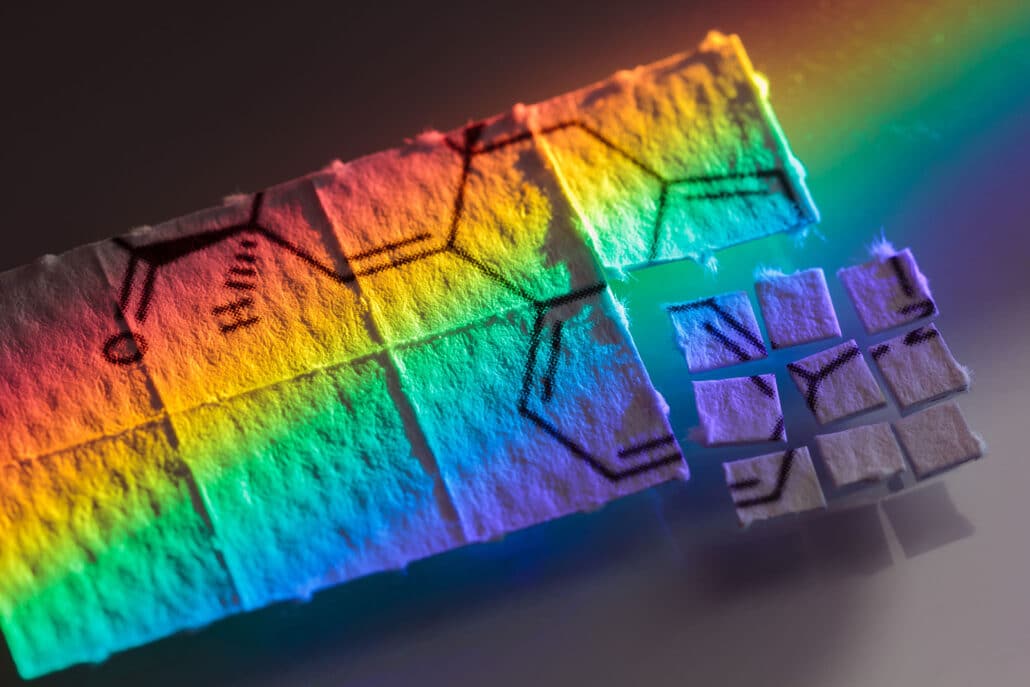LSD is one of the most misused hallucinogenic drugs today. It’s a powerful substance, well known for its psychoactive effects, like altering mental processing and changing brain activity.
Although it’s not one of the most physically addictive drugs out there, when abused, it can cause psychological dependence and severe risks.
This guide walks you through the side effects of LSD and its addiction signs, as well as how to recover from its addiction.
Table of Contents
Understanding LSD
To figure out how LSD can be addictive, let’s first take a quick look at the drug:

Lysergic acid diethylamide (LSD), well-known as acid, Lucy, or trips, is a synthetic drug formulated mainly from a substance extracted from a fungus called “ergot.”
Acid belongs to a drug group called psychedelics, known for their effect on altering the perception of reality.
This group of medications is used under medical supervision for the treatment of some psychiatric issues. However, some use it illegally on their own.
Taking a small dose of LSD can lead to minor changes in perception and mood. Large doses, however, can cause distortions of reality and deep hallucinations.
Most people who use this drug use it in the form of a liquid solution added to sugar cubes or gummies. Others use it in the form of tablets or capsules.
The Street Names of LSD
People refer to LSD with more than 80 various names. These names are linked to the designs found on the blotter paper.
The following are the most common ones:
- Acid
- Dots
- Mellow Yellow
- Trips
- Boomers
- Blotter Acid
- Window Pane
Nonetheless, when LSD is combined with other substances, you might find it sold under the following names:
- Outer Limits: A blend of acid and cocaine
- Frisco Speedball: A combination of cocaine, heroin, and LSD
- Black Acid: A mixture of phencyclidine and acid
- Banana Split: A combination of 2C-B and LSD

Why Is Acid Dangerous?
LSD directly affects serotonin, the brain chemical and neurotransmitter involved in our perception process. That way, using acid without medical supervision can cause visual hallucinations, detachment from reality, and halogenic effects.
These perception changes can last for over 12 hours, increasing the possibility of LSD users engaging in life-threatening actions.
In addition to this direct impact, acid can also result in a wide variety of side effects both in the long and short term.
Because of its extremely high potential for abuse and unknown medical use, LSD is listed as a Schedule I drug in the US.
The Side Effects of LSD
LSD comes with a bunch of both long-term and short-term adverse effects. These side effects may impact anyone who uses the drug, whether they’re first-time or long-time users.
The following are these adverse effects:
Short-Term Side Effects
A person who goes through a ‘trip’ using LSD might experience various short-term effects for up to 12 hours.
These effects reach their peak after four to six hours. Some of them are physical, while others are psychological. Here they are:
| Physical Adverse Effects | Psychological Adverse Effects |
| Dry mouth | Depression |
| Insomnia | Anxiety |
| Sweating | Changed perception of time |
| Increased heart rate | Delusions |
| Tremors | Suicidal thoughts |
| Increased blood pressure | Religious or mystical sensations |
| Severe appetite loss | Impulsive behavior |
| Dizziness | Quickly changing emotions |
| Visual hallucinations | |
| Dissociation | |
| Violent behavior |
In addition to these side effects, ingesting LSD in high doses can lead the user to experience a “bad trip.” The user can engage in highly harmful and unexpected behaviors during that “bad trip.”
Likewise, people with a family history of psychiatric disorders are more likely to experience “bad trips” when taking acid.
Long-Term Adverse Effects
Although rare, people who use acid can suffer from long-term visual effects known as flashbacks. Shockingly, some people experience this effect for up to multiple years after the last drug use.
When these flashbacks happen frequently, psychiatrists call it “Hallucinogen Persisting Perception Disorder” HPPD for abbreviation.
As an HPPD patient, the person experiences the following visual distortions:
- Intensified colors
- Size confusion
- Halo effects
- The blurring of small pattern
- Seeing unrealistic geometric patterns
Until now, no definitive medication has been recommended for the treatment of HPPD.
However, a few preliminary studies showed that Clonazepam and Lamotrigine can be effective drugs for this issue.

How Does LSD Addiction Develop?
Like all other hallucinogenic drugs, LSD doesn’t have a high likelihood of causing physical dependence.
In other words, when someone stops using the drug, they don’t usually experience severe physical withdrawal symptoms.
That being said, acid can create tolerance in the long term, leading the user to increase the doses gradually to maintain the same effect.
The continuous use of LSD will eventually result in psychological addiction, which will be highly apparent in the user’s intense craving for the substance. These psychological effects happen as a result of experiencing drug highs.
What makes things worse is that most people who have an LSD use disorder don’t misuse this drug alone. It’s common for patients with LSD addiction to be addicted to other drugs, such as opiates and marijuana.
What Are the Signs of LSD Addiction?
Here are nine signs to help you determine if someone is suffering from LSD use disorder:
- Inability to stop using LSD despite wanting to do so
- Increasing the drug doses at a high frequency
- Having intense cravings for acid
- Avoiding gatherings and social activities to free up time for acid use
- Having a hard time fulfilling the simplest work and home responsibilities
- Spending considerable time using and recovering from LSD
- Having trouble in relationships because of LSD use
- Using LSD when it’s hazardous to do so, such as on the road
- Experiencing psychological withdrawal symptoms when quitting acid
To precisely determine the severity of the LSD use disorder, here’s a simple guide to follow:
- Mild disorder: if the person has two to three symptoms.
- Moderate disorder. When the person shows four to five signs.
- Severe disorder: If the person has form 6 or more symptoms.
How Hard Is It to Stop Using LSD?
Quitting LSD can be a little bit challenging. You might suffer one or more of the following psychological withdrawal symptoms when quitting the drug:
- Anxiety about the impact of the drug
- Severe lack of concentration
- Vivid hallucinations
- Revisiting distortions
- Confusion
Even worse, most people who suffer from an LSD use disorder usually have underlying mental illnesses like depression.
As such, a significant part of the LSD recovery process should be targeting the treatment of these mental health issues.
With all that in mind, it’s never a wise idea to self-medicate your LSD use disorder, as it can be a dangerous decision.

So, What Is the Safest Approach to Treat LSD Addiction?
LSD addiction treatment varies among people because of individual variations. Given that, each patient should undergo a highly customized LSD treatment plan tailored specifically to their condition.
Nonetheless, the plan should contain the following essentials:
1. Medically-Supervised Detox
The first step to flush out LSD from your system is to go through a detox period. During this period, you’ll experience the drug’s psychological withdrawal symptoms. So, you’ll need to deal with these symptoms appropriately to avoid hurting yourself or others.
For this reason, seeking medical assistance and supervision during detoxification is necessary. A reliable team of addiction specialists and medical professionals can help you properly control any withdrawal symptoms.
To achieve this, they’ll equip you with the right behavioral methods and medication you need for this period.
2. Ongoing Therapy for Co-Occurring Disorders
Besides LSD detoxification, you’ll need to address any underlying mental issue or addiction to a physically dependent drug you may have. This is to avoid relapse and getting back to using LSD in the future.
To achieve this, you should enroll in an outpatient or inpatient program. During the outpatient or inpatient program, you’ll engage in a variety of impactful activities. These activities include group therapy, one-on-one therapy, dialectical behavioral therapy, and cognitive behavioral therapy.
In these activities, the therapists will give you the proper behavioral techniques and medications to treat your mental illness or addiction condition. You’ll also be taught multiple coping mechanisms to use in your day-to-day life.
3. An Aftercare Plan
Because complete recovery from LSD addiction might take multiple years, patients need to have an aftercare plan. This will help them keep going on the right path of sobriety.
Medical professionals should cooperate with the patient to develop that plan and teach them how to follow it in their everyday lives.
Regular checkups and counseling sessions should be part of the aftercare plan.

Eager to Start Your Medically Supervised LSD Recovery in New York?
If you’re ready to kickstart your journey to get over LSD addiction, Long Island Interventions is here to help. We provide you with a reliable and guaranteed LSD addiction treatment experience in New York.
Our medical professionals will accurately evaluate your addiction condition. Based on the findings, they’ll provide you with a customized, medical-supervised recovery program.
Our addiction specialists will also guide you through the detox and co-occurring disorder therapy phases. In addition, they’ll provide you with ongoing support to ensure you achieve full recovery.
What are you waiting for? Please contact Long Island Interventions for information about LSD Addiction Treatment near you.

